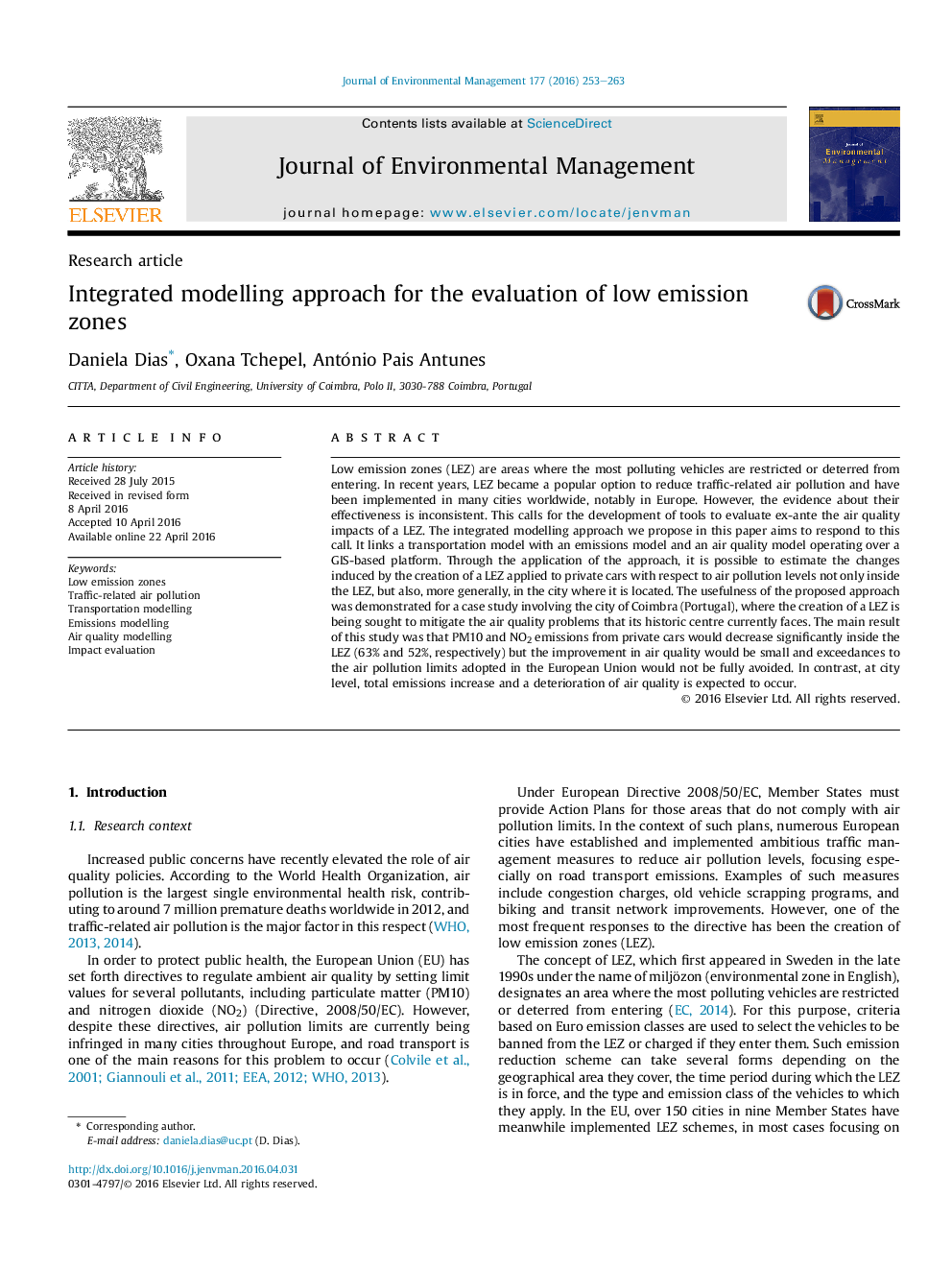| Article ID | Journal | Published Year | Pages | File Type |
|---|---|---|---|---|
| 7480423 | Journal of Environmental Management | 2016 | 11 Pages |
Abstract
Low emission zones (LEZ) are areas where the most polluting vehicles are restricted or deterred from entering. In recent years, LEZ became a popular option to reduce traffic-related air pollution and have been implemented in many cities worldwide, notably in Europe. However, the evidence about their effectiveness is inconsistent. This calls for the development of tools to evaluate ex-ante the air quality impacts of a LEZ. The integrated modelling approach we propose in this paper aims to respond to this call. It links a transportation model with an emissions model and an air quality model operating over a GIS-based platform. Through the application of the approach, it is possible to estimate the changes induced by the creation of a LEZ applied to private cars with respect to air pollution levels not only inside the LEZ, but also, more generally, in the city where it is located. The usefulness of the proposed approach was demonstrated for a case study involving the city of Coimbra (Portugal), where the creation of a LEZ is being sought to mitigate the air quality problems that its historic centre currently faces. The main result of this study was that PM10 and NO2 emissions from private cars would decrease significantly inside the LEZ (63% and 52%, respectively) but the improvement in air quality would be small and exceedances to the air pollution limits adopted in the European Union would not be fully avoided. In contrast, at city level, total emissions increase and a deterioration of air quality is expected to occur.
Keywords
Related Topics
Physical Sciences and Engineering
Energy
Renewable Energy, Sustainability and the Environment
Authors
Daniela Dias, Oxana Tchepel, António Pais Antunes,
